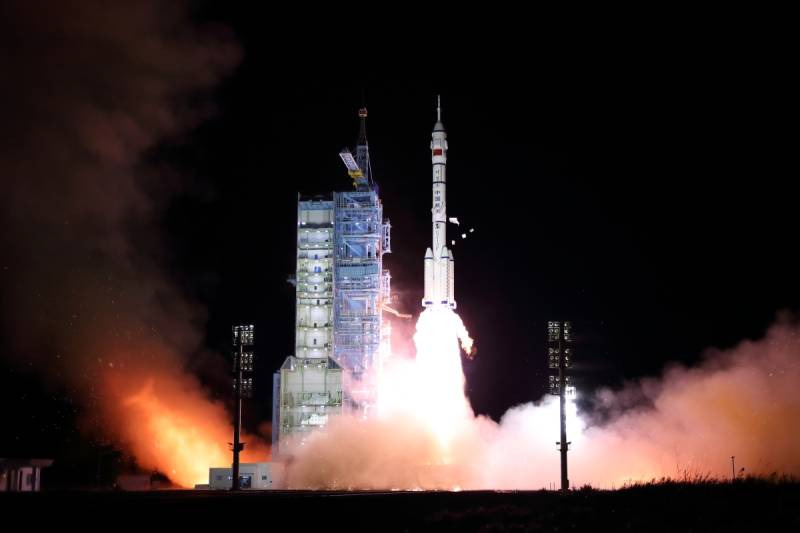China tests new space capability with hypersonic missile

Stay tuned with 24 News HD Android App

China has tested a new space capability with a hypersonic missile, the Financial Times reported on Saturday.
The report, citing multiple sources familiar with the test, said Beijing in August launched a nuclear-capable missile that circled the Earth at low orbit before descending toward its target, which three sources said it missed by over 20 miles (32 kilometers).
FT sources said the hypersonic glide vehicle was carried by a Long March rocket, launches of which it usually announces, though the August test was kept under wraps.
The report added that China's progress on hypersonic weapons "caught US intelligence by surprise."
Pentagon spokesman John Kirby said he would not comment on the specifics of the report but added: "We have made clear our concerns about the military capabilities China continues to pursue, capabilities that only increase tensions in the region and beyond. That is one reason why we hold China as our number one pacing challenge."
Along with China, the United States, Russia and at least five other countries are working on hypersonic technology.
Hypersonic missiles, like traditional ballistic missiles which can deliver nuclear weapons, can fly at more than five times the speed of sound.
But ballistic missiles fly high into space in an arc to reach their target, while a hypersonic flies on a trajectory low in the atmosphere, potentially reaching a target more quickly.
Crucially, a hypersonic missile is maneuverable (like the much slower, often subsonic cruise missile), making it harder to track and defend against.
While countries like the United States have developed systems designed to defend against cruise and ballistic missiles, the ability to track and take down a hypersonic missile remains a question.
China has been aggressively developing the technology, seeing it as crucial to defend against US gains in hypersonic and other technologies, according to a recent report by the US Congressional Research Service (CRS).
The reported test comes as US-China tensions have mounted and Beijing has stepped up military activity near Taiwan, the self-ruling US-aligned democracy that Beijing considers a province awaiting reunification.
In August, General Glen VanHerck, head of North American Aerospace Defense Command, told a conference that China had “recently demonstrated very advanced hypersonic glide vehicle capabilities”.
He warned that the Chinese capability would “provide significant challenges to my Norad capability to provide threat warning and attack assessment”.
Two of the people familiar with the Chinese test said the weapon could, in theory, fly over the South Pole. That would pose a big challenge for the US military because its missiles defence systems are focused on the northern polar route.
The revelation comes as the Biden administration undertakes the Nuclear Posture Review, an analysis of policy and capabilities mandated by Congress that has pitted arms-control advocates against those who believe the US must do more to modernise its nuclear arsenal because of China.
The Chinese embassy declined to comment on the test, but Liu Pengyu, spokesperson, said China always pursued a military policy that was “defensive in nature” and its military development did not target any country. “We don’t have a global strategy and plans of military operations like the US does. And we are not at all interested in having an arms race with other countries,” Liu said.
“In contrast, the US has in recent years been fabricating excuses like ‘the China threat’ to justify its arms expansion and development of hypersonic weapons. This has directly intensified arms race in this category and severely undermined global strategic stability.”
One Asian national security official said the Chinese military conducted the test in August. China generally announces the launch of Long March rockets — the type used to launch the hypersonic glide vehicle into orbit — but it conspicuously concealed the August launch.
The security official, and another Chinese security expert close to the People’s Liberation Army, said the weapon was being developed by the China Academy of Aerospace Aerodynamics. CAAA is a research institute under China Aerospace Science and Technology Corporation, the main state-owned firm that makes missile systems and rockets for China’s space programme. Both sources said the hypersonic glide vehicle was launched on a Long March rocket, which is used for the space programme.
The China Academy of Launch Vehicle Technology, which oversees launches, on July 19 said on an official social media account that it had launched a Long March 2C rocket, which it added was the 77th launch of that rocket.
On August 24, it announced that it had conducted a 79th flight. But there was no announcement of a 78th launch, which sparked speculation among observers of its space programme about a secret launch. CAAA did not respond to requests for comment.
